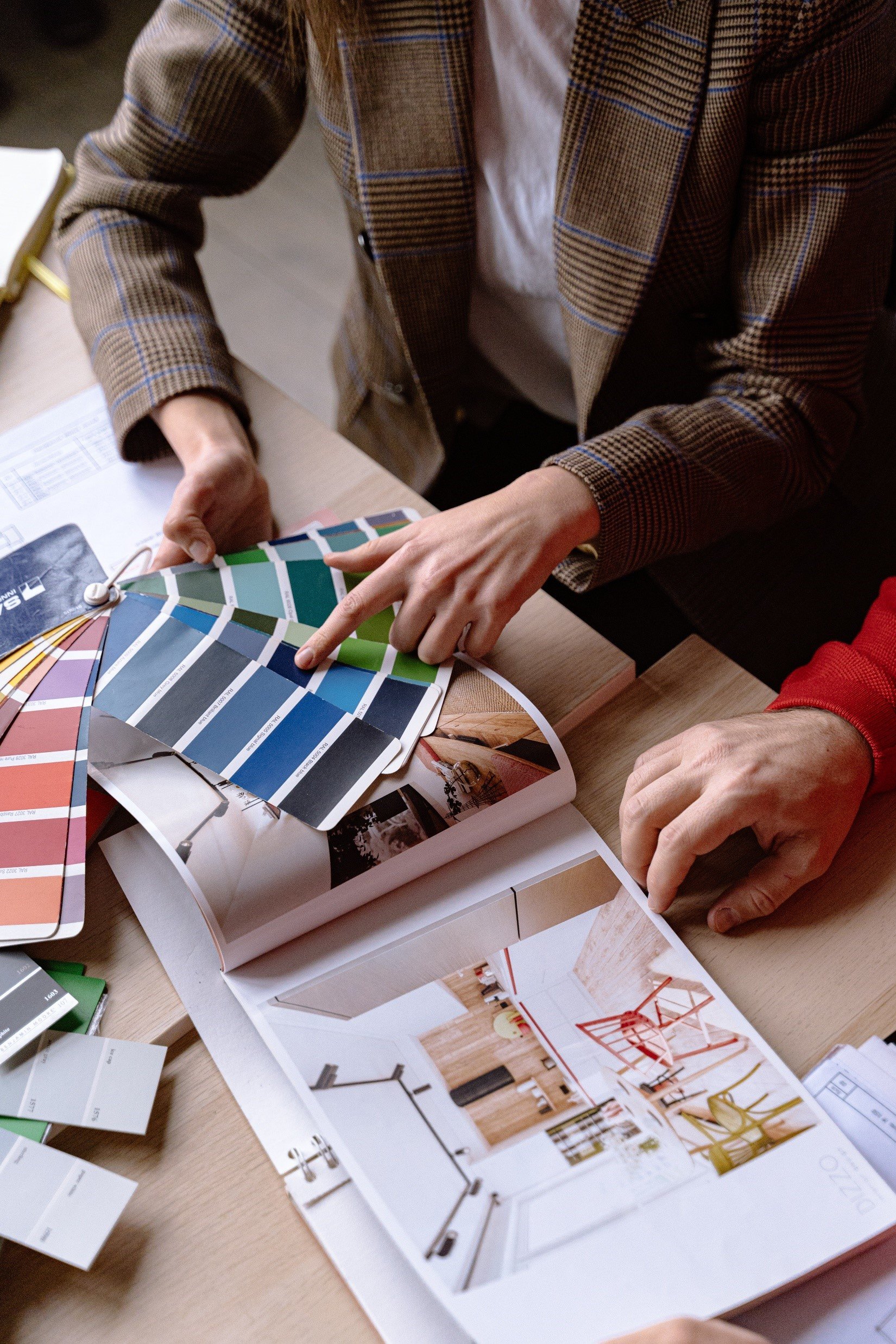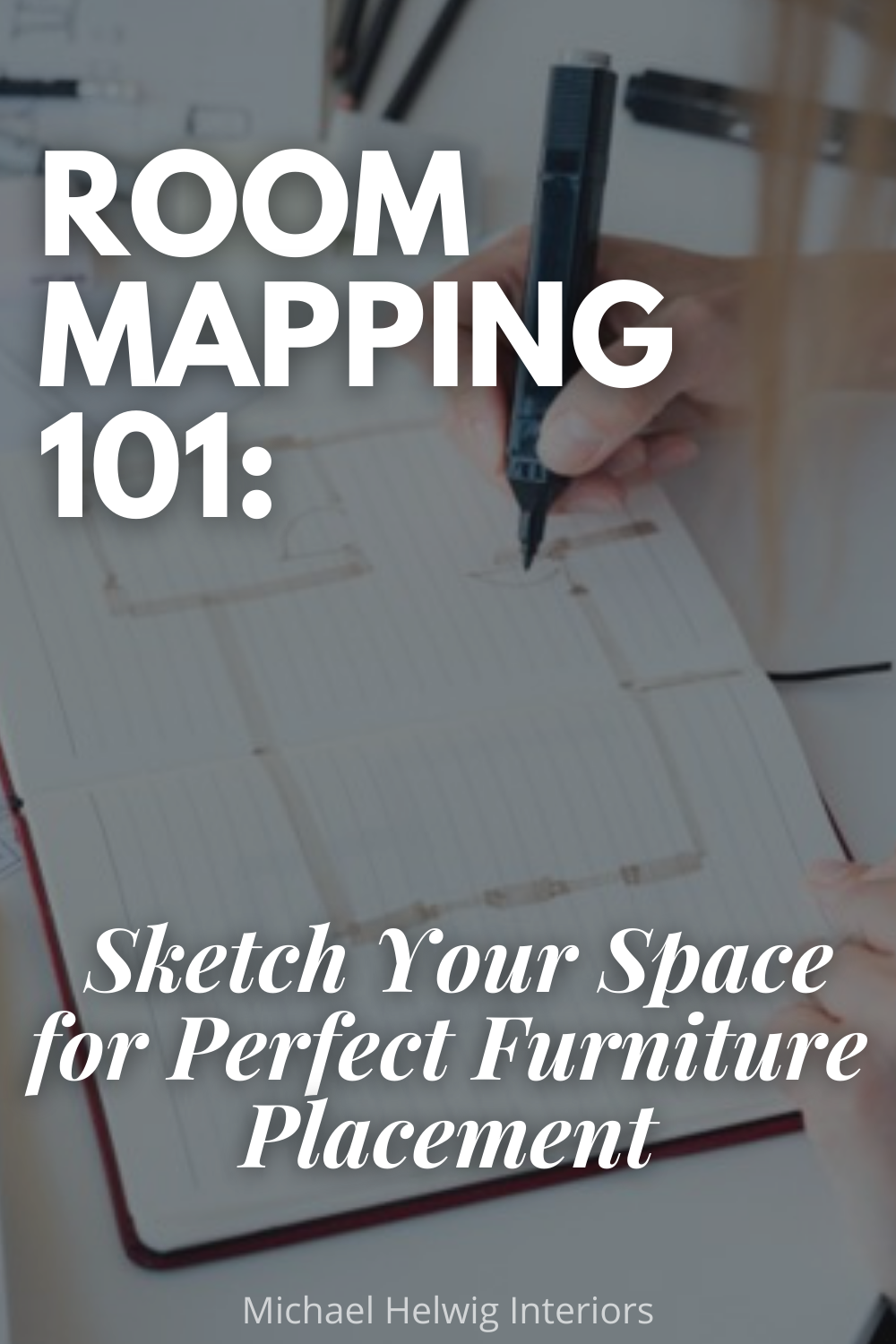I love being an interior designer.
I have many opportunities to work with lots of different people, with lots of different design aspirations. My gratitude for helping folks is endless.
Sadly, I receive at least 2 or 3 messages each week from people who are struggling to furnish their room with nothing more than the overall dimensions.
Michael Helwig Interiors
I can always sense their total frustration with feeling stuck and I understand how overwhelming it can be to furnish a room, especially when you don't have all the necessary measurements.
So, today I decided to write a post that shows how to properly plan your furniture layout for any tricky, small, or awkward space. Heck, for ANY space in general!
My intension is always to save you from making expensive mistakes, and this is the foundation for how I do that.
Michael Helwig Interiors
One of the biggest mistakes you can potentially make is buying furniture without taking into consideration the size of your space. That means you MUST know the size of each wall, doorway, window, and feature: like a fireplace, built-in cabinetry, and any other permanent, unmovable structure.
You also must know the shape of the room, especially tricky bits like angled walls, bump-in and bump-out walls, alcoves and niches. If you only know the overall length and width of the room, you’re leaving a lot of room for some expensive and unnecessary mistakes.
Michael Helwig Interiors
Here’s a free guide that shows you exactly how to do this, step by step.
Let’s start with the 3 core things you’ll need for your room sketch:
1. Knowing the length of each wall. This is one step further than knowing only the length and width of the room. This helps you to see the space you have. For instance, if you have bump-out window area that’s 60” wide by 20” deep, and you want to place a console in the space. You’ll know you can’t get one that’s 72” wide because it will be too long.
Michael Helwig Interiors
2. Determining focal points. Sketching your room will help you determine the focal point of the space. This could be a TV wall, a fireplace, or a stunning view. Knowing where the focus of the room is will help you arrange your furniture in a way that highlights that feature and creates a cohesive design.
Michael Helwig Interiors
3. Determining traffic flow. You want to ensure that there is enough space for people to move around comfortably without bumping into furniture. Sketching your room will help you determine the best placement of furniture to allow for easy movement throughout the space.
Michael Helwig Interiors
So how do you sketch a room?
Start by getting the shape of the room down first, including the placement and length of each wall. Be sure to include the measurements for windows, doorways, half walls, fireplaces, and any other architectural features. I like to use pencil so you can erase mistakes. It doesn’t have to be perfect. A free hand sketch works fine, if you can read and understand it.
Don't forget to include the height of the ceiling on each wall, including any features like dormers, pitched or angled ceilings.
Once you have the basic layout of the room, consider the focal point and any functional needs.
If it's a family room with a TV focal point, how many seats will you need on an average day?
Will they need seating to swivel and or recline?
Include any existing pieces you want to keep, like a credenza or accent chair.
And don't forget to include decorative items like art and mirrors with their full dimensions.
Michael Helwig Interiors
Sketching your room like this, before going to shop for furniture, will help designers, furniture salespeople and decorators to see the space so they can translate that into whatever format they use to help design your room.
Why is sketching your room important for you?
Sketching helps you visualize the space and prompts your mind to see the "problem areas."
Karolina Grabowska
If you're working with a designer, seeing those challenging spots will make it easier for you to communicate with them. You’ll be able to show them that funky alcove that can only hold a 60” console, or the raised fireplace hearth that pops out 3 feet into the center of the room. You’ll be able to show them a door that swings into the room, and how a chair positioned near it will be clunky and in the way.
You'll have a visual map for the room, with every crucial dimension needed. This will make is much easier to find furniture to fill the room and to use every inch of space in a more thoughtful and functional way.
If you’re unsure of how to start a room makeover project, this map will make it easier to start planning what you want for the room and to determine priorities - because they might change once you know exactly how much space you have.
Michael Helwig Interiors
Most importantly, you'll have a portable record of exactly how big the room is. This will be a HUGE time saver as you venture out to the stores to buy furniture. You will save time because it will cut down your decision-making process. You won’t have to delay making a purchase because you need to measure. Your sketch will tell you immediately what will fit and what won’t.
Ann poan
All this should make the entire process of redecorating or designing your room easier, less stressful and a lot more fun.
When you have your crucial dimensions down, you can confidently work with your designer or furniture consultant to fine tune the fun parts that you’re excited about, like aesthetics and specific choices for your room.
Antoni Shkraba
To sum up,
Sketching your room before buying furniture is an essential step in creating a comfortable and functional space.
It helps you determine the size and shape of furniture that will fit, the focal point of the room, and the traffic flow within the space.
By taking the time to sketch your room, you'll have a better idea of what you want and need in the space, making the process of selecting and arranging furniture much easier.
Read Next
From Awkward To Awesome: How To Choose Anchor Furniture That Maximizes Your Living Space
Discover how to choose anchor furniture that transcends different styles and maximizes your living space! From timeless designs to multifunctional pieces, our guide offers expert tips on selecting proportional, versatile, and high-quality furniture. Create a cohesive and stylish living space that lasts with our strategies for choosing classic, neutral, and functional pieces.
Join the Fun!
If you enjoyed this post and you want to keep seeing my weekly blog, the best way to do that is to subscribe.
You can subscribe by downloading my 11 Secrets Only Designers Know to Make Your Space Rock. If you’re curious about how decorators and designers make a home look magazine ready, you’ll love taking a gander at these 11 secrets. You’ll learn how to style your room from the floor up and it will work for ANY space you have.
I write about small space design and decorating, sustainable furniture options, positive self care and a variety of do-it-yourself home décor.
I’d love to connect with you!
“Michael Helwig was top-notch, very professional and responsive to my needs. He allowed me time to explore ideas and try out a variety of combinations until we found the perfect fit. Michael provided detailed information and offered beautiful ideas to make my dream living room become a reality. The furniture he sourced has totally transformed my living room space. Everyone that has seen my new living room has one word, WOW! A special thank you to Michael for a wonderful experience.”
“Michael was very knowledgeable and guided us, with great patience and good humor, through the process of designing our dining room and helping us find the perfect sleeper sofa. He offered really helpful advice when we asked questions - which was often - but at no time did we ever feel pushed. He helped me when I felt like I couldn’t make one more decision. When my new furniture finally arrived I realized everything down to the pillows was perfect. I couldn’t be happier!”
Antoni Shkraba
Michael is Principal designer and blogger at Michael Helwig Interiors in beautiful Buffalo, New York. Since 2011, he’s a space planning expert, offering online interior e-design services for folks living in small homes, or for those with awkward and tricky layouts. He’s a frequent expert contributor to many National media publications and news outlets on topics related to decorating, interior design, diy projects, and more. Michael happily shares his experience to help folks avoid expensive mistakes and decorating disappointments. You can follow him on Pinterest, Instagram and Facebook @interiorsmh.




















